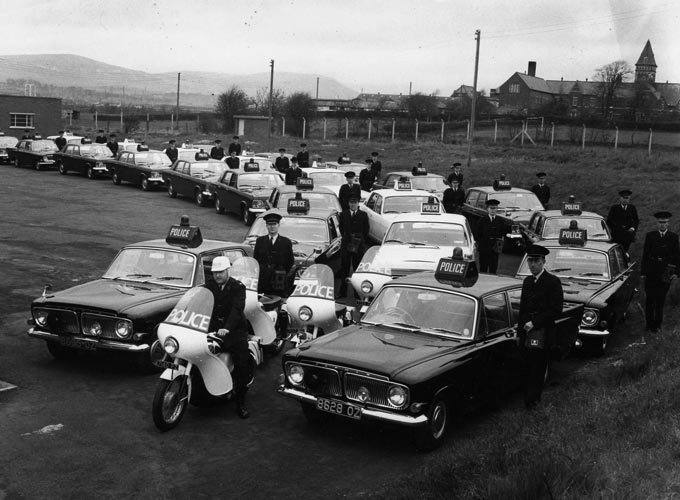Description
A publicity photograph showing part of the Royal Ulster Constabulary's (RUC) Traffic Branch's fleet of radio equipped vehicles introduced to provide mobile patrols in Northern Ireland. In the foreground, the policemen are driving Mark III Ford Zephyrs and carrying PYE Bantam radio sets. Improvements in radio technology led to a decade of modernization in the RUC. In 1960, a new district headquarters and control room opened at Ladas Drive, Castlereagh and in 1962, a new RUC headquarters opened at Knock in Belfast. Both premises were equipped with radio equipment that allowed police with pocket radio phones to keep in constant contact with their bases.
In 1963, a new Constabulary Act increased the strength of the force to cope with the growing number of cars on the roads and rising crime rates. The traffic branch expanded with unmarked Q cars (powerful cars with unassuming exteriors) to deter speeding drivers along the newly opened M1 motorway.
The Ministry of Home Affairs and the inspector general appointed County Inspector Thomas Crozier to draw up proposals for a more modern and efficient RUC. In 1967, Crozier’s plans were announced and radio controlled, fast response patrol cars were at the centre of his vision of a new modernised RUC. In order to fund the roll out of a province-wide radio network, Crozier recommended a reduction in other areas of operations. Fewer men on the beat in urban areas, the closure of 24 smaller rural stations and an amalgamation of a number of stations in Belfast. Limited opening hours were introduced in rural stations allowing the men to be redeployed on other duties. The official 44 hour week was introduced and restrictions on off duty activity and evening roll call were abolished.
By 1968, the number of RUC stations had been reduced to 146. There were 3,031 policemen supported by 180 B Specials mobilised for full time duty. Ninety-six of the 112 sub-districts were radio equipped and 100 pocket phones were in use. These changes made the RUC more efficient but also reduced the force's contact with the public.


